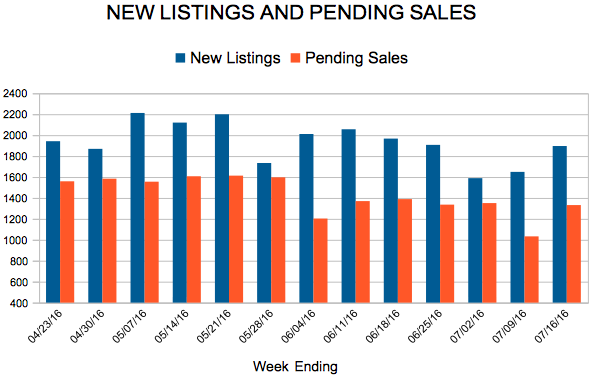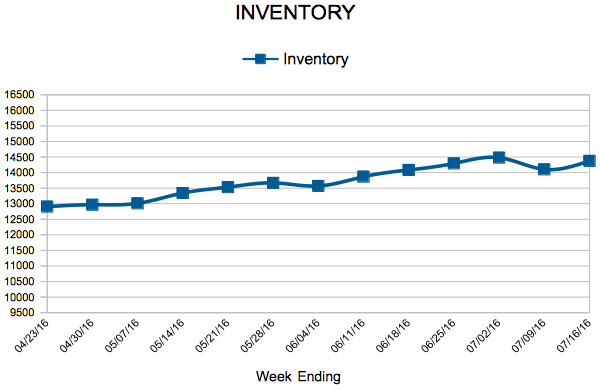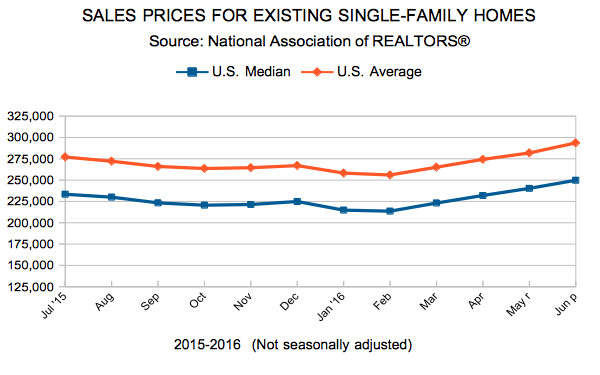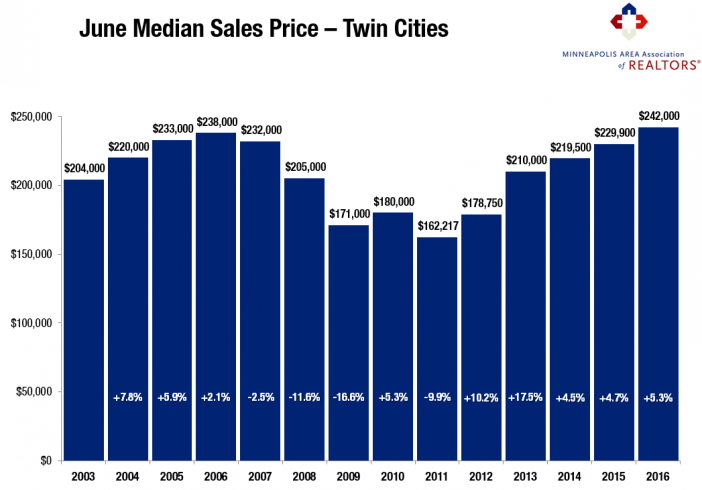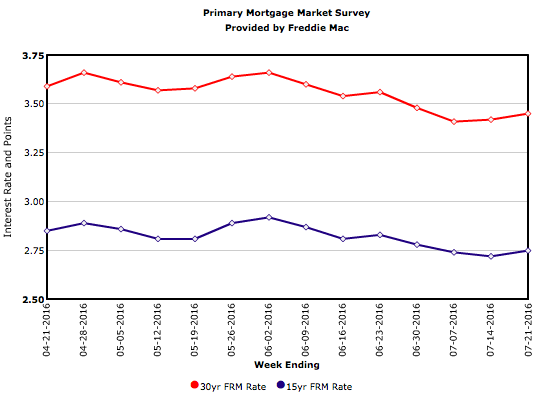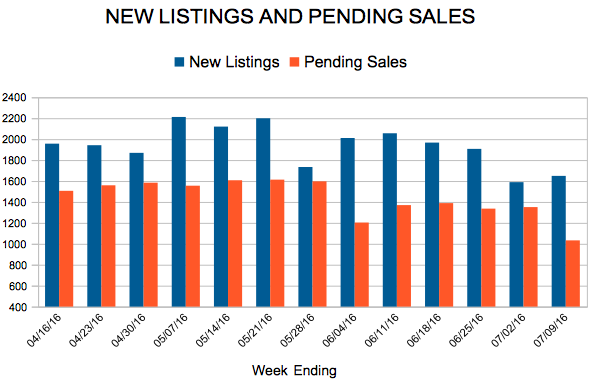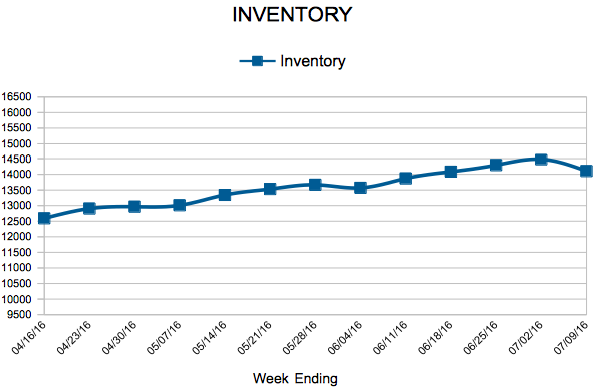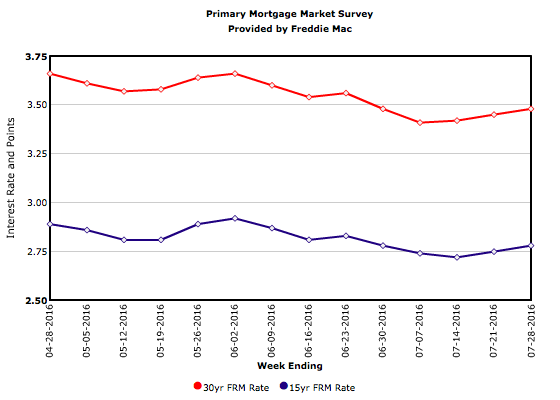
The 10-year Treasury yield remained flat this week in anticipation of the Fed’s July policy meeting. Mortgage rates, on the other hand, rose another 3 basis points to 3.48 percent. Nonetheless, home sales continue to benefit from the persistently low mortgage rates with June’s new home sales coming in at an annualized rate of 592,000 homes – its fastest pace since 2008.

